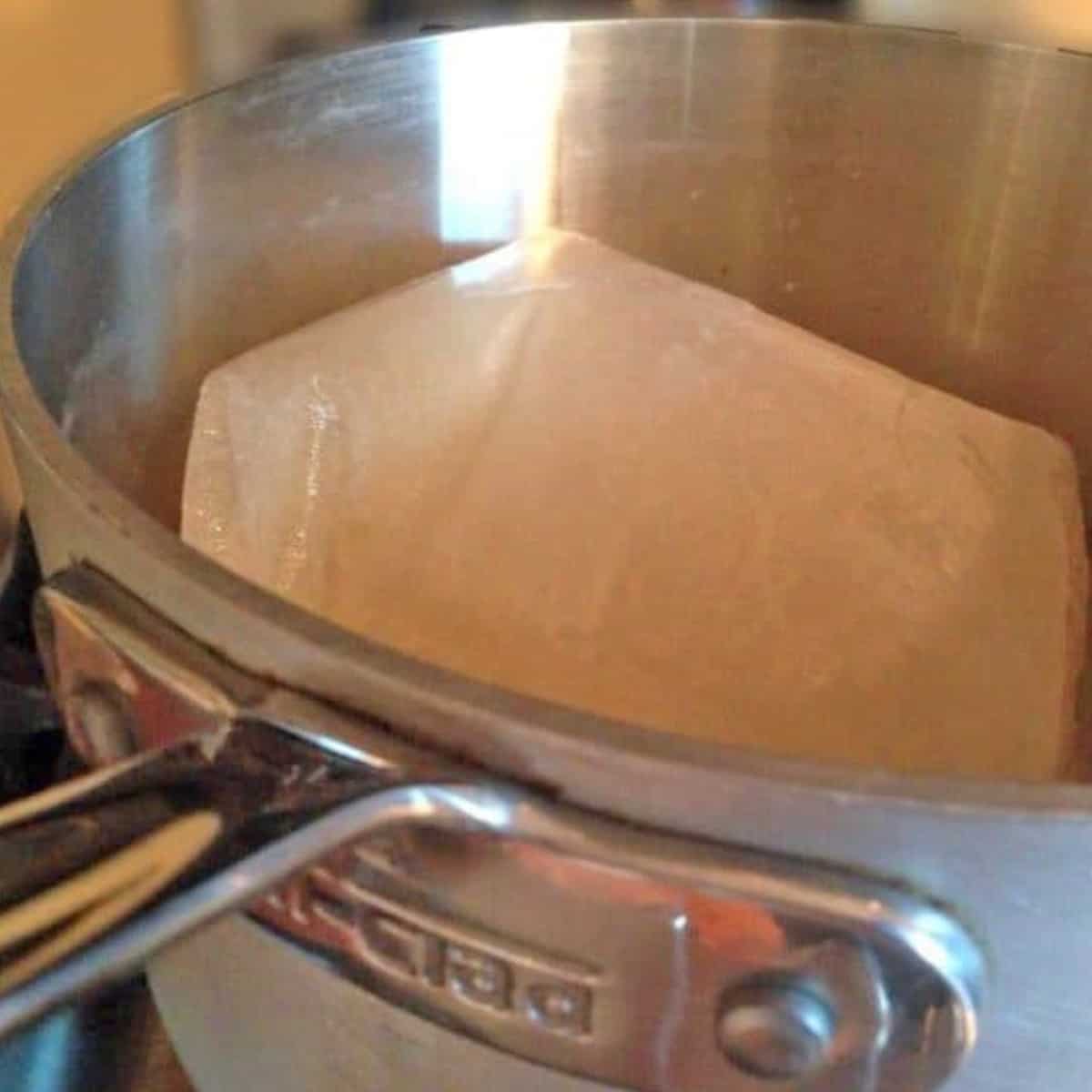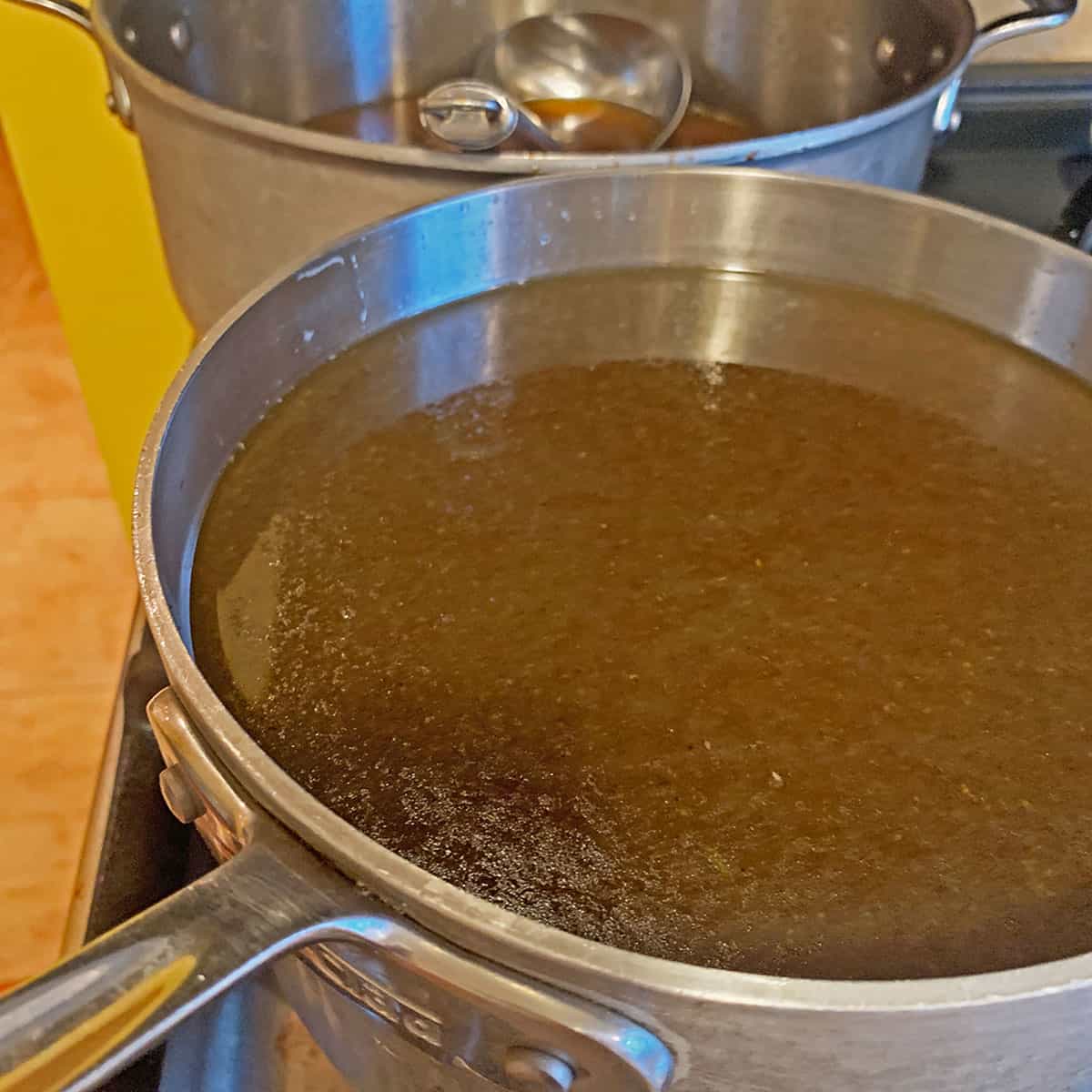What’s the Difference Between Stock and Broth?
on May 08, 2013, Updated Apr 28, 2023
This post may contain affiliate links. Please read our disclosure policy.
Have you ever wondered what the difference is between stock and broth? While they both serve as a base for many delicious dishes, there are many key differences in their preparation, ingredients, and uses.
Knowing the difference between stock and broth is not one of those things you think about all the time. But still, once in a while, you may wonder about this.

Today I’ll explain the main differences between stock and broth, their variations and substitutions, and how to use them in your favorite recipes. This is one of many kitchen tips that I think you might find useful.
Table of Contents
About this
Last Sunday evening we were celebrating the birthday of a good friend of ours and as is almost always the case, there was food galore, all over the place.
Conversations were being bantered about everything – how quickly the grass seemed to have turned green, recent movies some of the guests had seen, the psyche of Quentin Tarantino, warnings to not eat the white lining of the Italian salami which was being passed around, and then the question of the hour was posed, “What is the difference between chicken stock and chicken broth?”
Suddenly the conversation exchanged by this subgroup of four or five all but ceased.
Heads were scratched, contemplative sips of wine taken, and theories blurted out.
It was right about at that point when Scott’s iPhone appeared and before anyone could say bouillon we were being educated on this topic.
The story of stock and broth
Stock and broth are both savory liquids used as a base for soups, stews, sauces, and other dishes like homemade gravy. They are made by simmering animal bones, meat, and vegetables in a large pot of water for an extended period of time.
The cooking process allows for the extraction of collagen, gelatin, and amino acids, giving stock and broth rich flavor and health benefits.
The truth is, the terms stock and broth are often used interchangeably, and for the average Joe or Jolene, this is usually O.K.
The late culinary deity Julia Child, however, along with her contemporaries, both past and present, would likely beg to differ.

What is stock?
Stock is a savory liquid that is made by simmering animal bones, such as chicken bones or beef bones, along with vegetables, herbs, and seasonings in a large pot of water.
The presence of bones in the cooking process gives the stock its gelatinous consistency and richer flavor. Stock is a base for many classic recipes, including chicken noodle soup, beef stew, and gravy.

We learned that stock (or base) is a strained liquid that simmers a bone in water.
It is often used to provide a foundation for an accompanying ingredient. Typically it (alone) is not seasoned, and as one source pointed out, most often is not all palatable.
Furthermore, the collagen that is extracted from the bone causes a thickened state when cooled and provides for better deglazing of pans than broths.
The extra richness or hardiness associated with stock is a result of incorporating bone into its production and, in some cases, provides a good substitute for cream or butter when making a sauce.
What is broth?
Broth, on the other hand, often is seasoned and in fact, can be pleasing on its own. Like stock, it can be added to other foods to fortify and enhance their flavors.
Broth is a thinner, lighter version of stock made by simmering animal meat, such as chicken meat or vegetables, in a large pot of water for a shorter period of time. Broth has a thinner consistency and may be seasoned with additional seasonings, such as bay leaves or tomato paste. Broth is commonly used as a base for clear soups, such as chicken soup or vegetable soup.
Additionally, broth gets its flavor from the meat that often is simmered within and accompanying vegetables such as celery and carrots. Unlike stock, broth usually remains liquid at room temperature.
As mentioned earlier, one can often be substituted for the other. A word of caution: Broth may be saltier than stock, and adjustments in recipes may be need to be done to account for this.
Variations
There are various types of stock and broth, including brown stock, white stock, vegetable stock, and bone broth.

- Brown stock is made by roasting the bones and vegetables before simmering them in water, which gives the stock a deeper flavor and color.

- White stock is made by simmering the bones and vegetables in water without browning them first, resulting in a lighter color and flavor.
- Vegetable stock is made by simmering vegetable scraps and herbs in water. We use this in our roasted cauliflower soup and many other recipes!
- Bone broth is made by simmering collagen-rich bones for a long period of time.
If a recipe calls for stock or broth and you don’t have any on hand, you can use bouillon cubes or cans of broth from your local grocery store as a substitute.
However, homemade stock or broth is always the best option, as it has a richer flavor and lower sodium levels.
How to use stock or broth
Stock and broth can be used as a base for various dishes, including soups, stews, sauces, and gravies. They can also be used to make a quick pan sauce or add flavor depth to your favorite recipes.
When using stock or broth, it’s important to season it with salt and additional herbs and spices, such as bay leaf, to enhance the flavor.
Recipes always taste better to me when I use my own stock or broth, probably because I know where it came from and I can feel good about getting additional use of leftover ingredients that otherwise would have been discarded and gone unused.
Either freezes well and makes for easy storage and access for those times when you want to add a little extra goodness to whatever it is that’s on your menu
How to freeze stock or broth and use it later
Making homemade stock or broth is a great way to add flavor to your cooking and reduce waste by using up leftover bones and vegetable scraps.
I make many chicken recipes and always try to make stock from the carcass. It comes in very handy for so many recipes!
Once you’ve made your stock, you can freeze it to use later in a variety of recipes. Here’s how to do it:
- Let the stock cool: After finishing making it, let it cool to room temperature. This will prevent steam from building up in your freezer and causing freezer burn.
- Choose your containers: You can freeze your stock in plastic containers, glass jars, or freezer bags. Just leave some room at the top of the container to allow for expansion as the stock freezes.
- Label your containers: Before you pour the stock into your containers, be sure to label them with the date and what kind of stock it is. This will help you keep track of what you have in your freezer and ensure that you use the oldest stock first.
- Freeze the stock: Pour it into your containers and place it in the freezer. If you’re using plastic containers or bags, you can stack them to save space. If you’re using glass jars, leave some space at the top to allow for expansion.
- Thaw it: When ready to use your stock, you must thaw it first. You can do this by placing the container in the fridge overnight or by running it under warm water for a few minutes.
Now that your homemade stock is ready to use, the possibilities are endless! You can use it as a base for soups, stews, and sauces or add it to rice and grains for extra flavor.
Expert Kitchen Tip: Freeze the stock or broth in ice cube trays for easy to use portions later!
Common questions
The biggest difference between the stock and broth is the inclusion of bones in the cooking process, which gives stock its gelatinous texture and richer flavor.
Adding bones to a homemade tomato sauce will do the same thing. You’ll be amazed at the depth and structure of a sauce that is simmered with a long bone in it!
Homemade bone broth is rich in collagen, amino acids, and other nutrients that can promote gut health joint health, and will help keep your skin looking good!
Yes, you can use chicken broth as a substitute for chicken stock in most recipes. However, keep in mind that broth has a thinner consistency and may result in a less rich flavor than homemade stock.
Related recipes
👨🍳 Tried this Recipe? Please leave a ⭐⭐⭐⭐⭐ rating in the recipe card below and leave a comment. We love hearing from our readers!
⏩ Stay in touch with us on social media by following us on Facebook, Pinterest, Instagram, and YouTube!
📬Get our Recipes delivered to your inbox for FREE!
Updated from the original post of May 8, 2013
















Love the information. I knew the difference, but had forgotten. Both are good uses of leftover bits and pieces, so no or little waste. Freezing is a terrific way to keep it at hand.
Thanks for the clarification, Dan! I wouldn’t have known the difference, either.
Kate,
Thanks for stopping by, food facts can be fun! Have a great weekend.